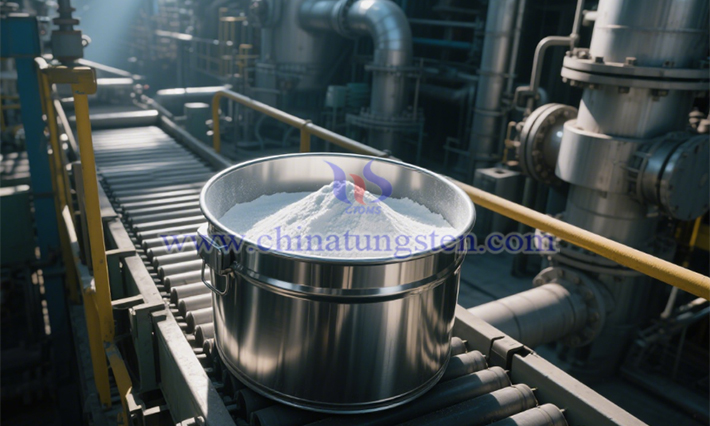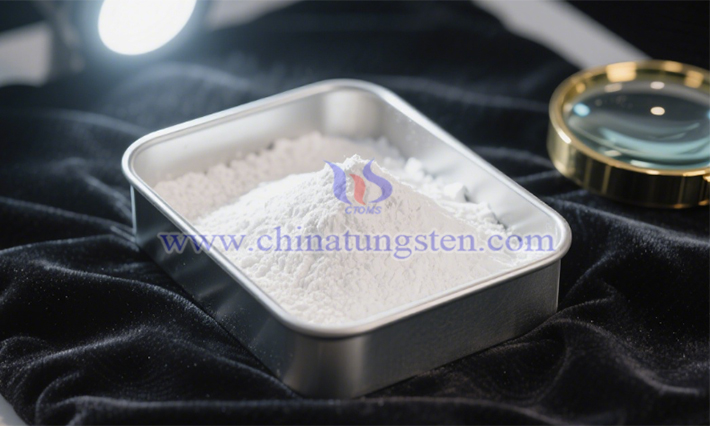What Is Potassium Tungstate?
- Details
- Category: Tungsten Information
- Published on Thursday, 03 July 2025 11:41
Compared to sodium tungstate, potassium tungstate (K₂WO₄) exhibits distinct solubility and chemical reactivity due to the introduction of K⁺ ions. From its role as an intermediate in metallic tungsten production to its function as an additive in photovoltaic cell electrolytes, this compound leverages an intrinsic logic of "ionic properties-crystal structure-application" to build perse application scenarios in energy, materials, and analytical chemistry.

Potassium tungstate is a colorless or white crystalline powder composed of tungsten, potassium, and oxygen, existing as an ionic compound with a monoclinic crystal system. In its lattice, two K⁺ ions are bonded to one WO₄²⁻ ion via ionic bonds, forming a layered structure that contributes to a density of 3.12 g/mL and a melting point of 921°C. Notably, the monovalent nature and larger ionic radius of K⁺ result in a weaker binding force with WO₄²⁻ compared to palent cations like Ca²⁺, leading to its characteristic high water solubility—a key distinction from most tungstates.
Solubility and Ionization Properties: K₂WO₄ readily dissociates into K⁺ and WO₄²⁻ in water, with solubility increasing with temperature, while it is nearly insoluble in alcohols, providing a basis for separation and purification. Acid-Base Reactivity: It reacts with strong acids (except hydrofluoric acid) to protonate WO₄²⁻ into tungstic acid, with phosphoric acid to form phosphotungstic heteropolyacid complexes, and with organic acids like citric or oxalic acid to form stable chelates. Thermal Stability: It must be stored in a cool, dry place, as high temperatures or humidity can cause decomposition.

Synthesis Techniques:
Potassium Dichromate-Tungsten Powder Heating Method: Mix potassium dichromate with tungsten powder in a specific ratio and heat under an inert atmosphere; potassium dichromate oxidizes tungsten powder to WO₄²⁻, yielding K₂WO₄ and Cr₂O₃.
Tungsten Powder-Potassium Hydroxide Solution Oxidation Method: React tungsten powder with a potassium hydroxide solution under oxygenated conditions to produce potassium tungstate.
Tungsten Oxide-Potassium Hydroxide Hydrothermal Synthesis Method: Dissolve tungsten trioxide (WO₃) in a potassium hydroxide solution, add potassium chloride to adjust the pH, and conduct the reaction under hydrothermal conditions to obtain potassium tungstate.
Applications: Potassium tungstate has wide-ranging uses beyond producing metallic tungsten powder and tungsten products. In ceramics, it serves as an additive to enhance strength and high-temperature resistance. As a photocatalyst, it facilitates pollutant degradation in photocatalytic reactions. In analytical chemistry, it acts as a reagent for detecting and analyzing certain substances. As a precipitant for alkaloids, it enables their precipitation from solutions for separation and purification. Additionally, it functions as an additive in photovoltaic electrochemical cell electrolytes, optimizing battery performance, efficiency, and stability.
- Chinatungsten Online: www.chinatungsten.com
- CTIA GROUP LTD: en.ctia.group
- Tungsten News & Price: www.ctia.com.cn
- Molybdenum News & Price: news.molybdenum.com.cn
- Tel.: 86 592 5129696; Email: sales@chinatungsten.com